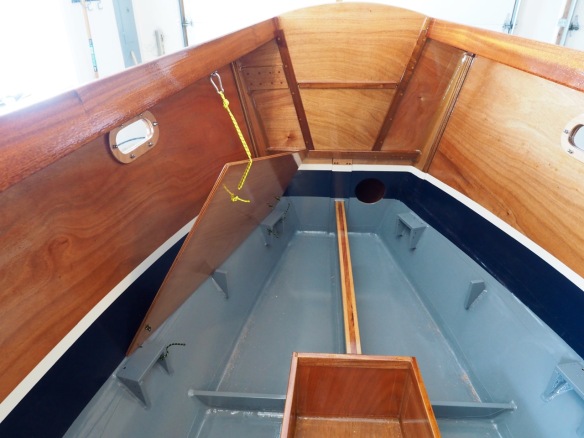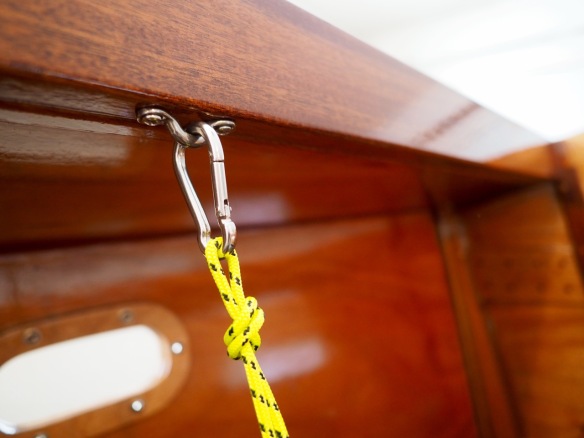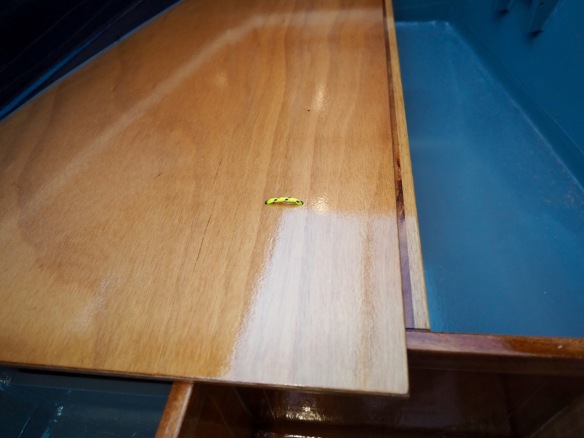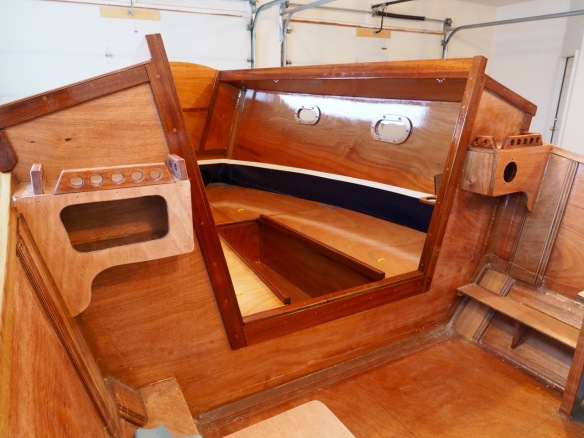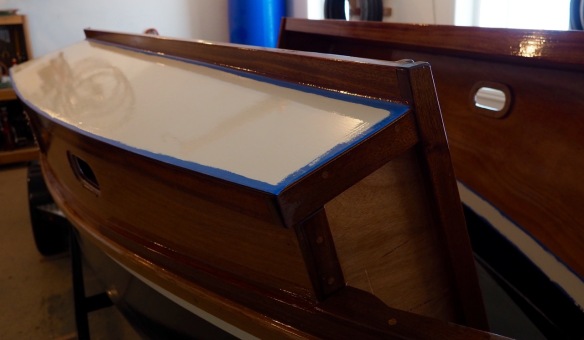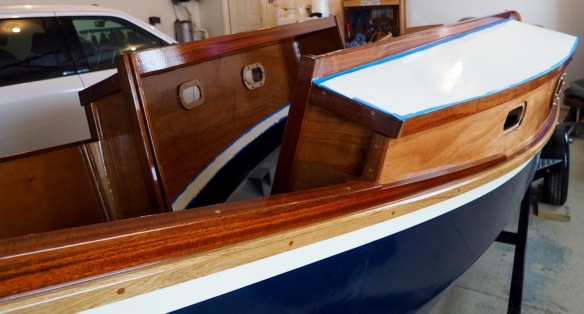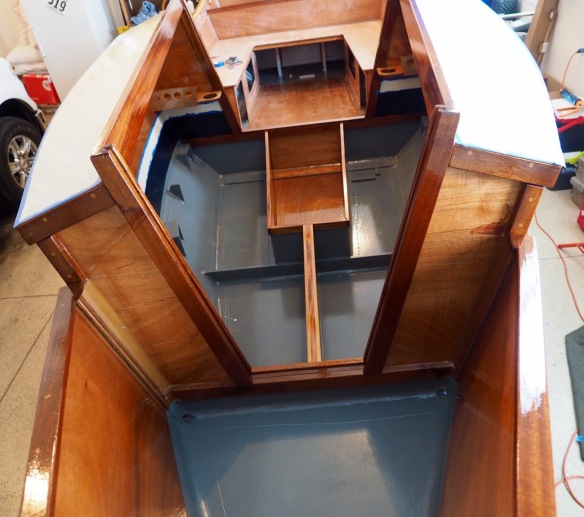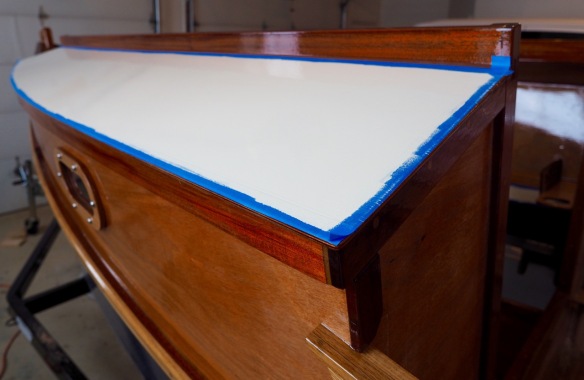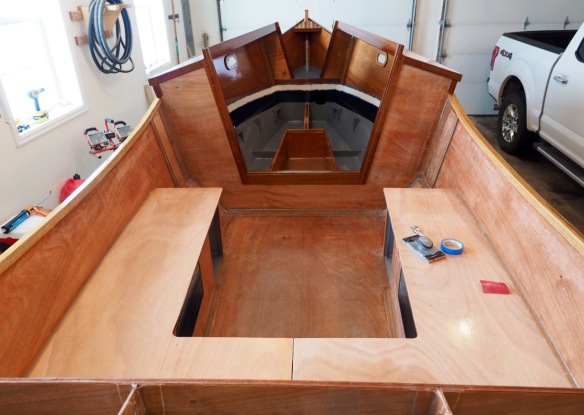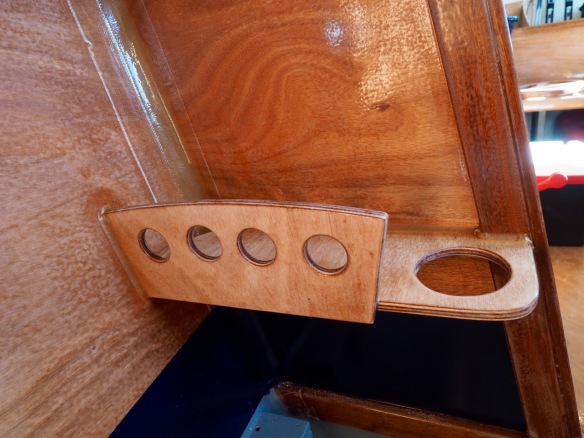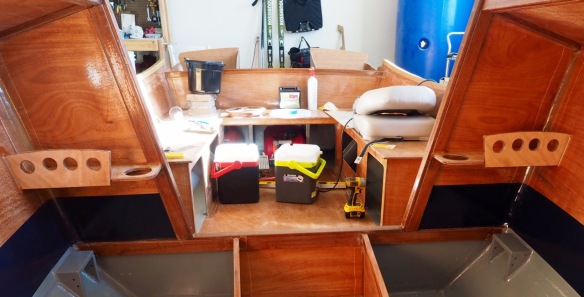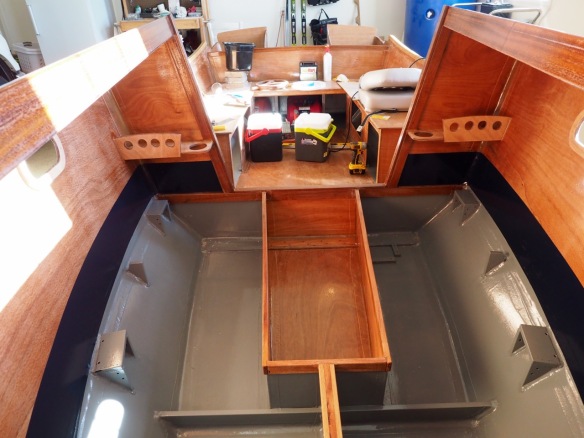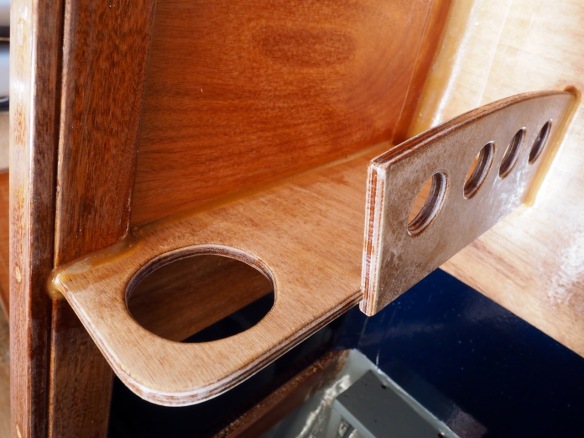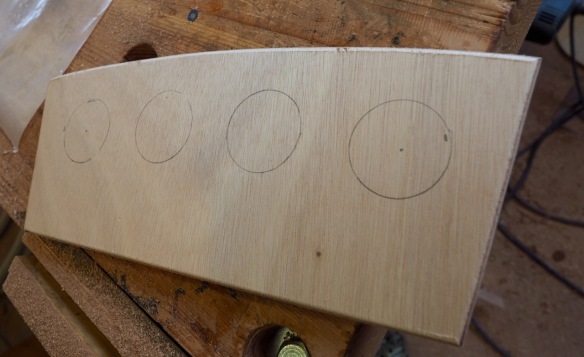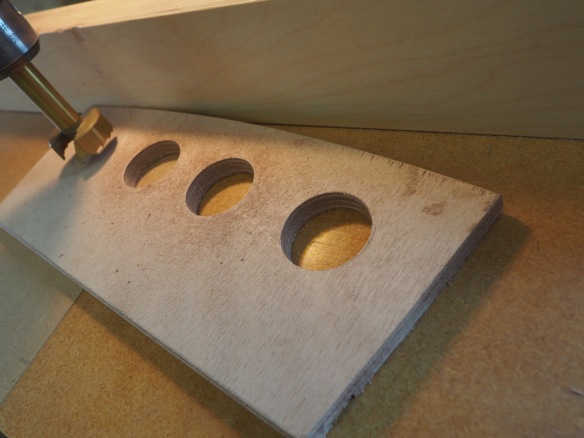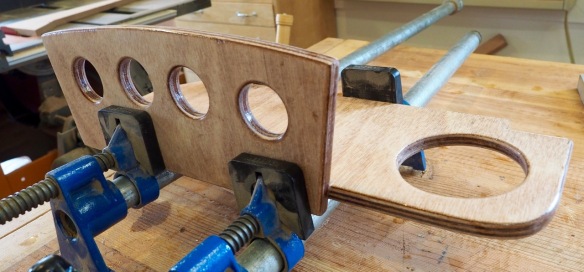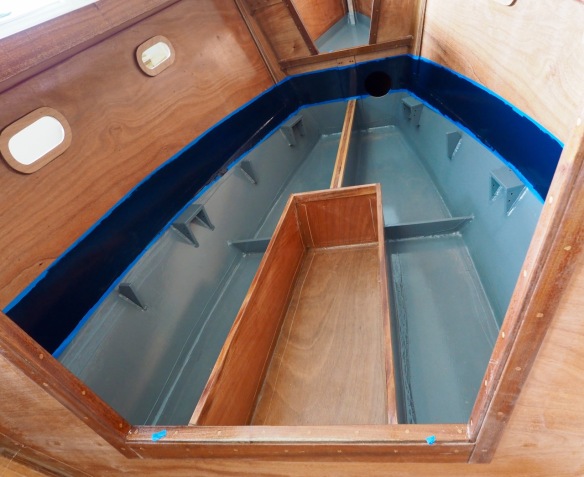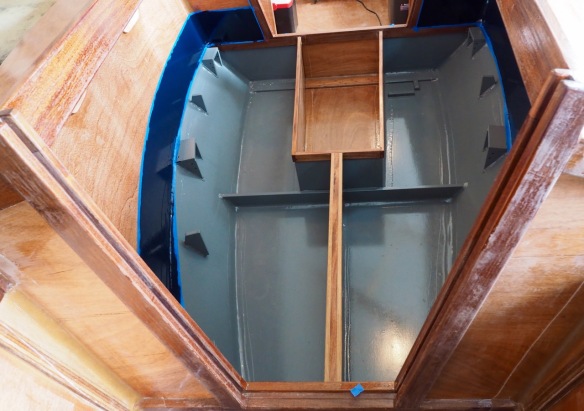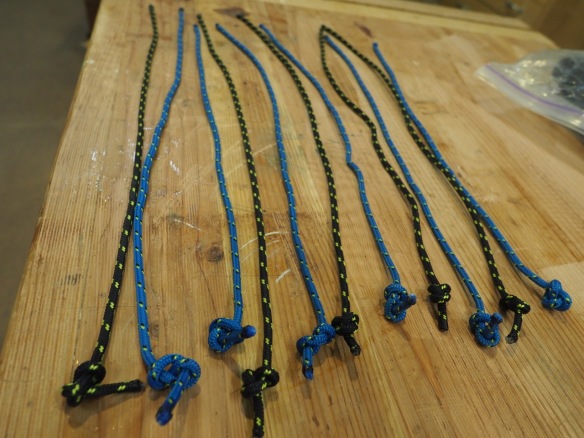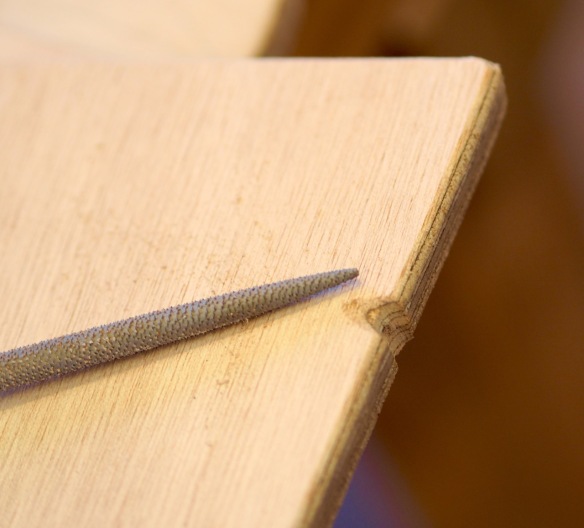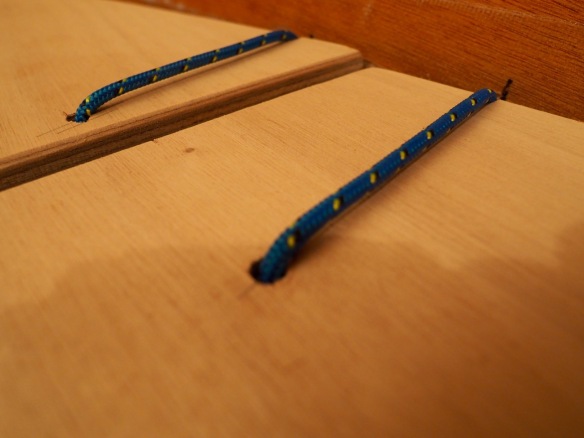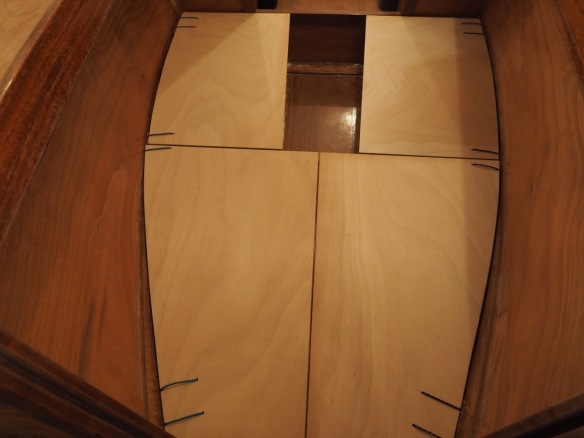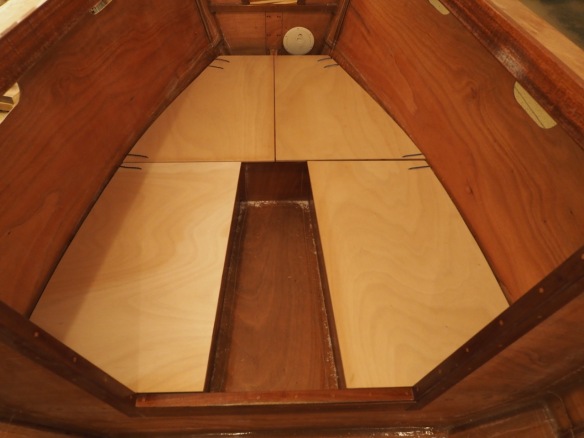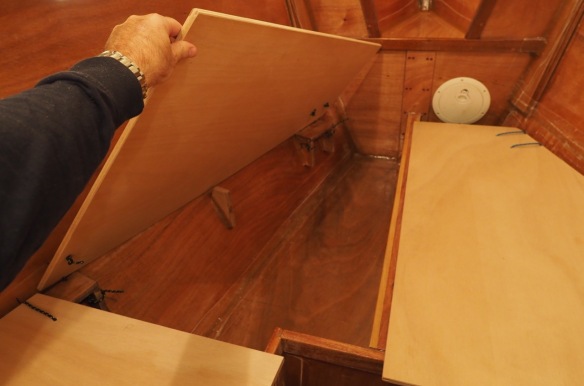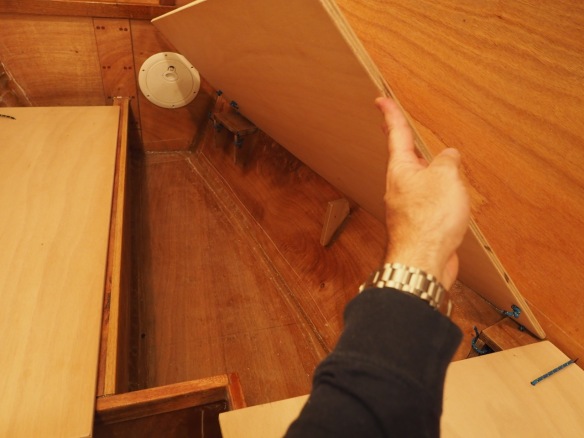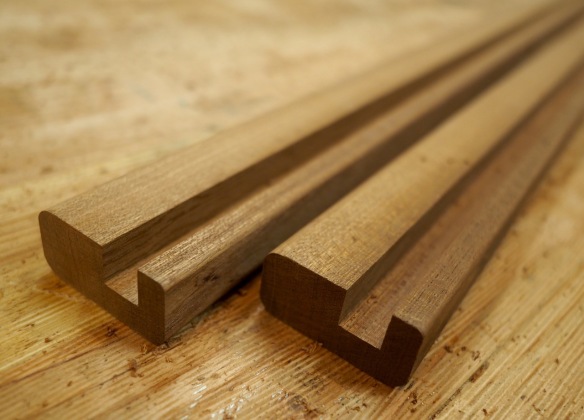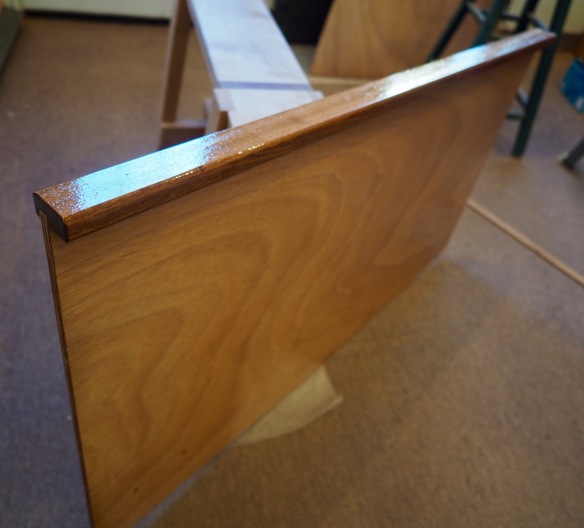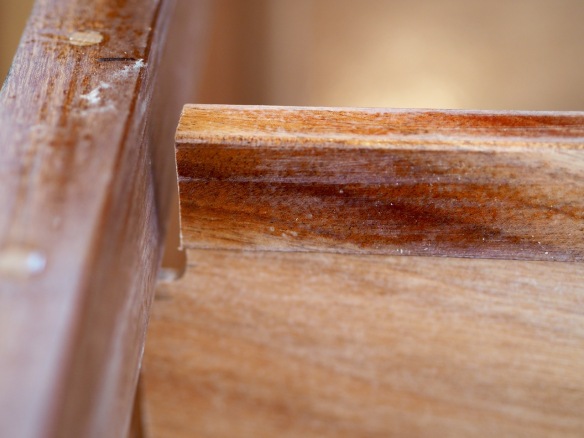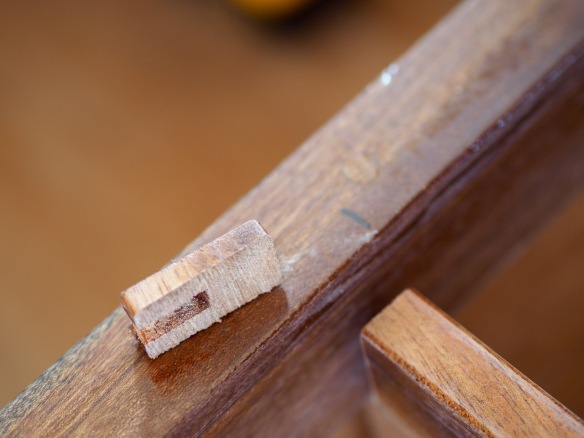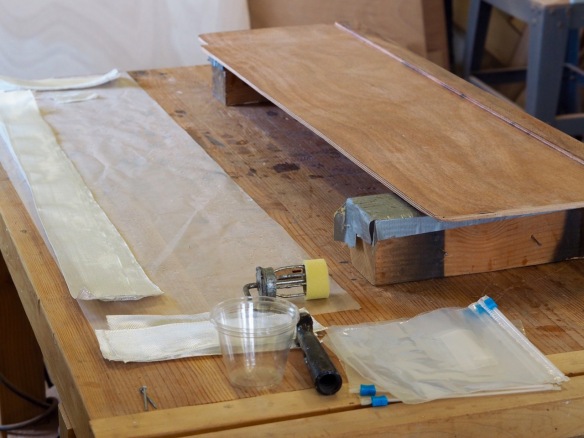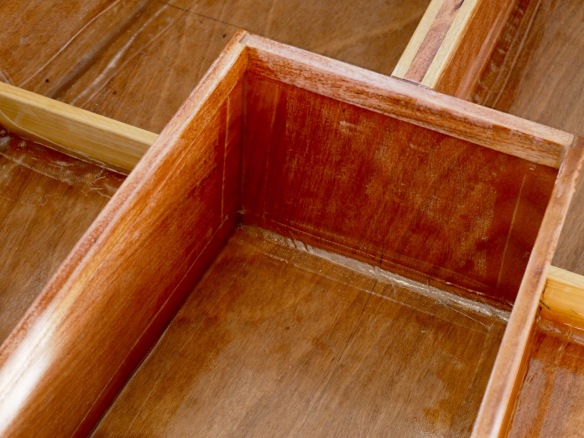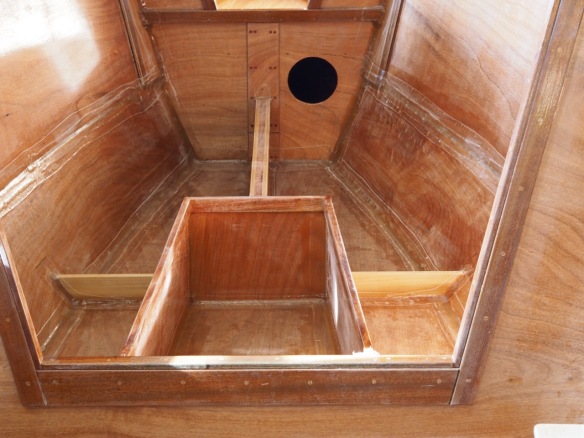Northern Cross is back from the upholstery shop.
Check it out:

Cabin top in stormy weather configuration, buttoned down for the night. The vertical bulkhead panels are velcro’ed around the edges.
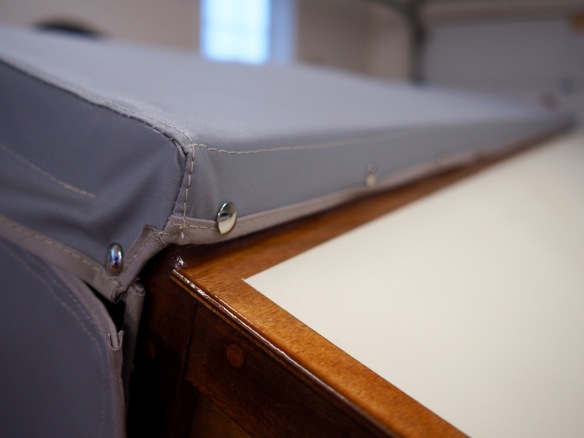
The cabin top secures with snaps…
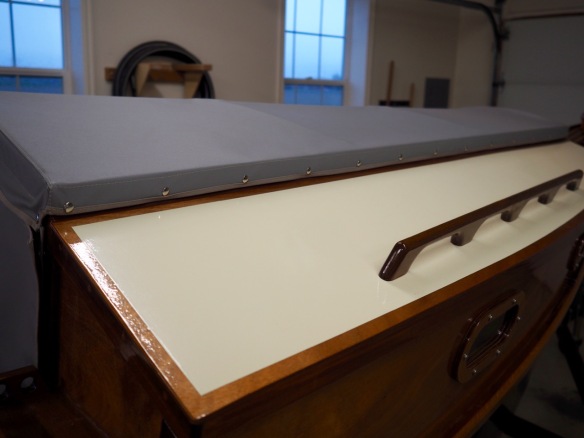
wrapped down around the cabin walkway.
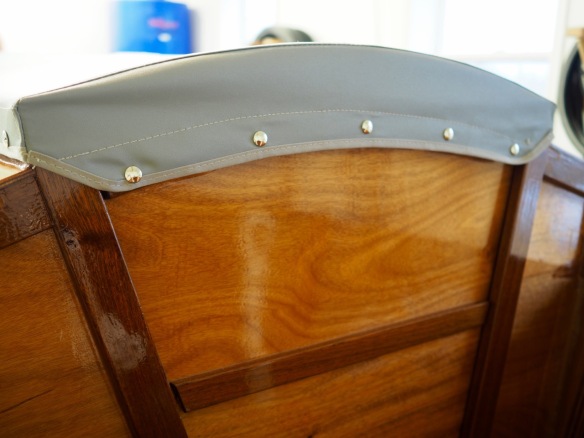
I wanted a longer flap than normal on the front filler board, to keep water out of the cabin when driving down the road.
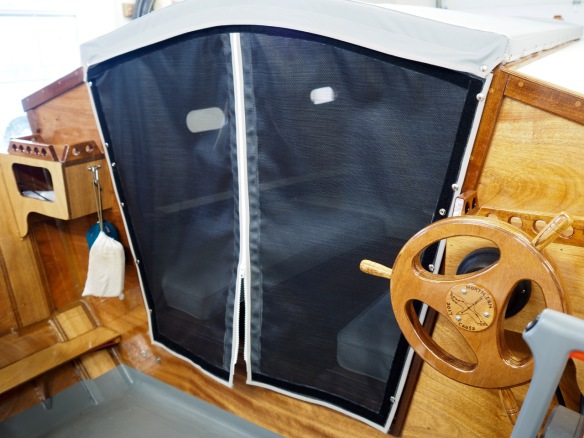
Cabin entrance with rain panels removed. The bug panels also remove by unzipping from the cover at the top edge.
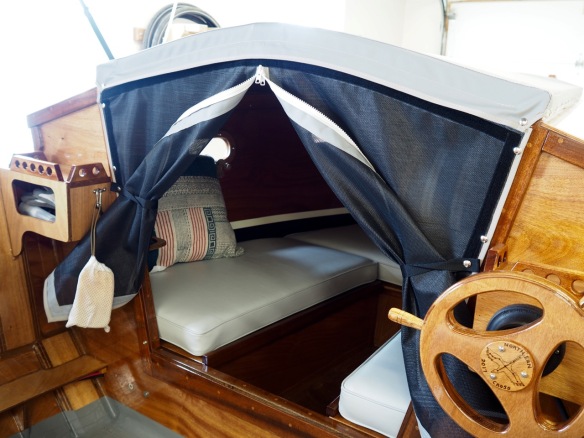
The bug netting snaps back out of the way for easy entrance.
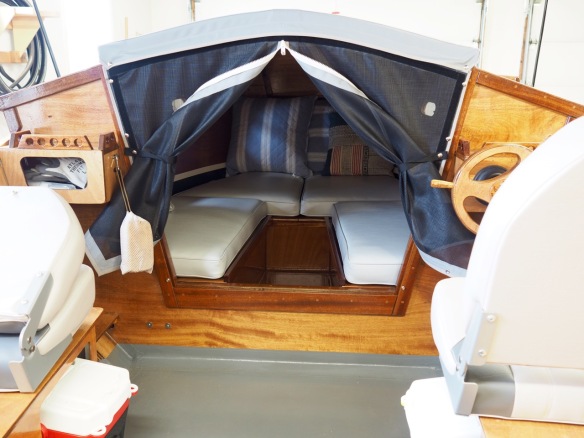
Bunk cushions were made from 3″ dense foam. They fit beautifully and still allow great access to storage below.
Now for the Bimini:
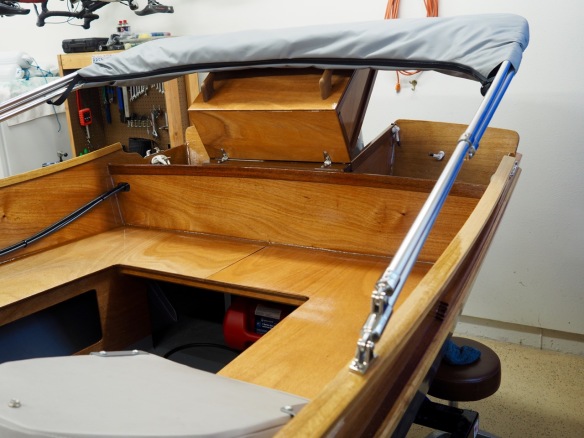
Bimini in the up position. It rests across the hand rails of the motor cover when traveling. I also have a travel cover that fits over everything that I’ll show in a later post.
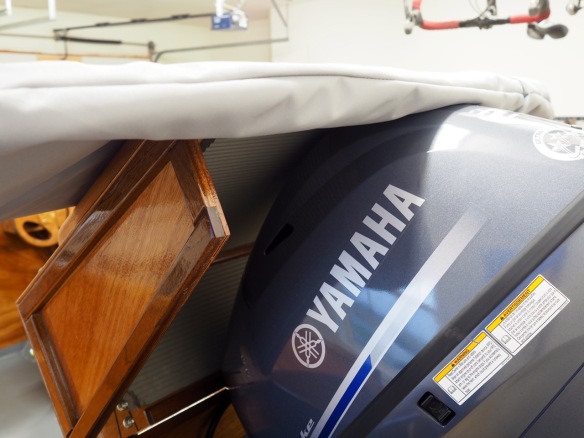
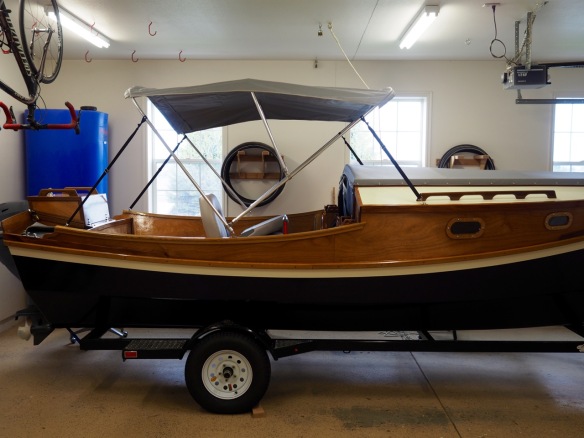
Bimini in the up position. I held the Bimini forward in the cockpit to offer more protection when standing and motoring. It’s about 6′ in length.
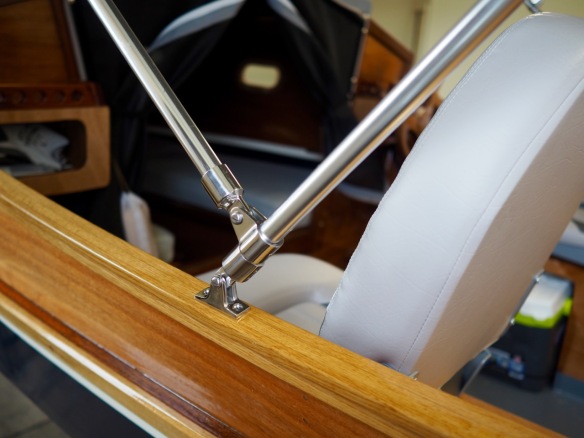
After looking things over, we decided the best place to mount the Bimini, was directly onto the oak handrails. This widened the Bimini and kept the bars out of way of my elbows while also providing a little more shoulder room. It should also keep a little more water out of the boat.

Stainless fittings secure the aluminum uprights. I applied lock tight to the screws to prevent them from vibrating out when traveling.
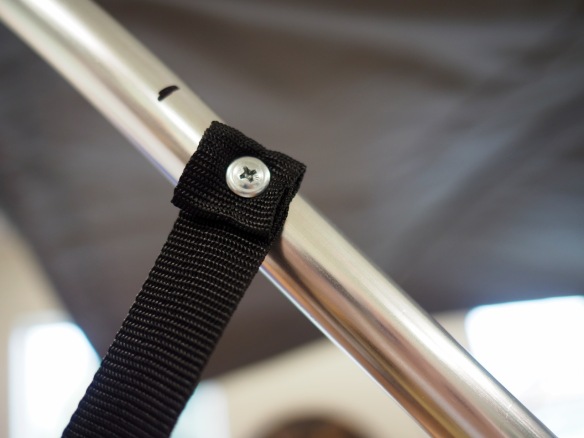
The Bimini was secured by screwing the webbing directly to the tubing. Though this might work fine , it didn’t seem secure enough to me.
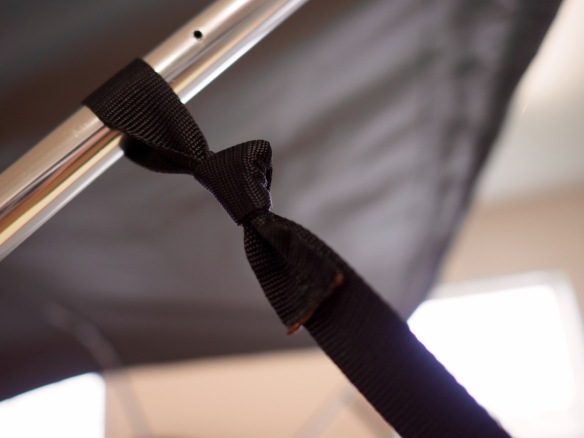
Instead, I decided to wrap the webbing around the tubbing with simple knot.
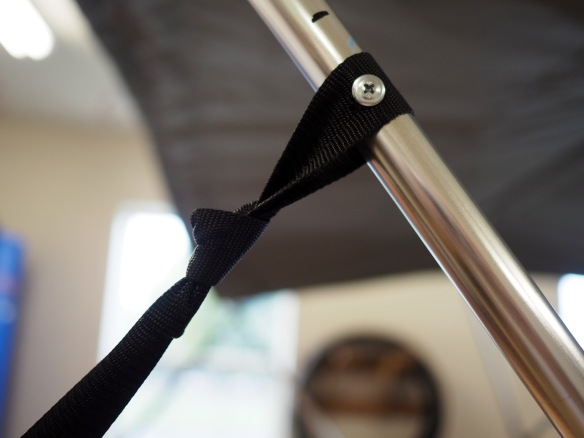
I then replaced the screw to keep the webbing from shifting up or down the tube. With the webbing wrapped around the tubing, it’ll be much more secure.
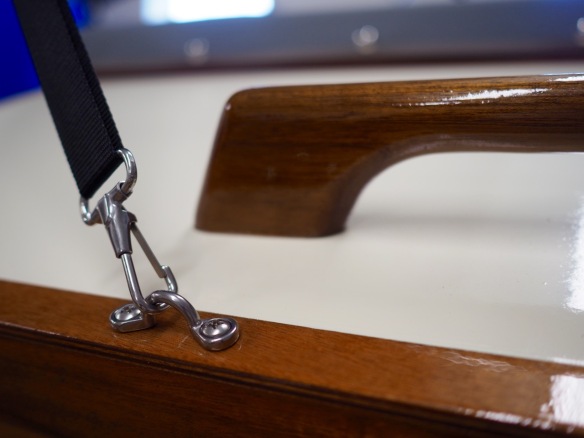
I used stainless pad-eyes to secure the forward webbing straps.
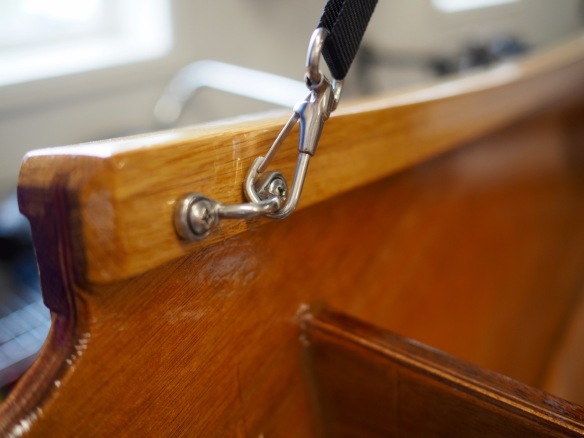
The aft strap was secured in a similar way.

And, there you have it. Secure and solid.
Summary:
I’m now adding a compass to the bulkhead and a tow hook to the transom (for rescuing stranded ski boats on the reservoir). I’m all but done folks and it feels so good. I’m looking to get back on the water for the official launch early next month.

